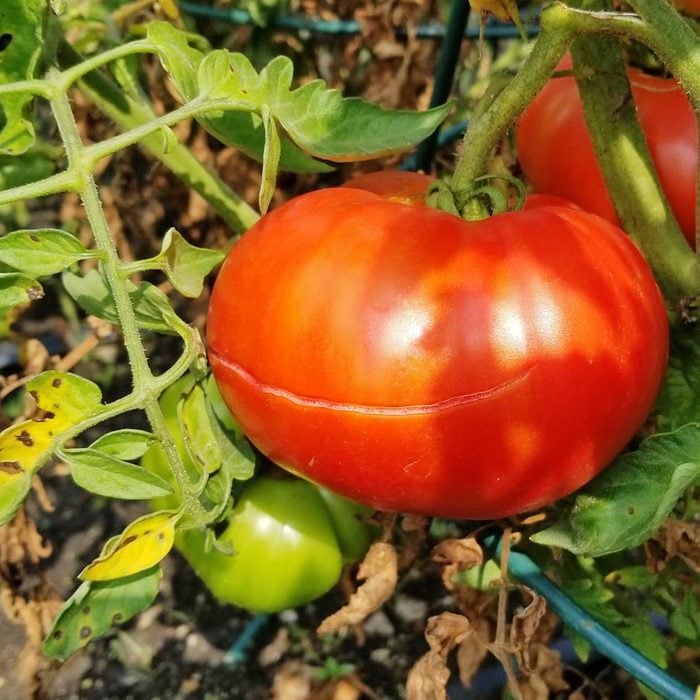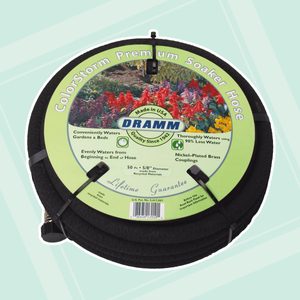Why Do Tomatoes Split? Here’s Your Answer, Plus How to Prevent It
Updated: Sep. 09, 2021

No matter how knowledgeable the vegetable gardener, everyone has asked "Why do tomatoes split?" at least once in their gardening lifetime.
You’ve doted over your tomatoes all summer long in anticipation of that quintessential moment when you sink your teeth into that first juicy, sun-ripened beauty. You’ve pampered them with the best soil and nutrient-rich compost, pinched off suckers and fed them fertilizer formulated just for your precious darlings. Then suddenly, fruits that were looking so promising just a day ago develop the most hideous cracks.
As you try hard not to take it personally, you scratch your head and wonder, why is this happening?
Why Do Tomatoes Split?
The answer is simple: water. Plants that are watered inconsistently, dry out and then experience a sudden monsoon delivered by Mother Nature or the gardener will lead to tomatoes splitting. It’s especially common in the large beefsteak-type heirloom tomatoes. As water becomes more available to a parched tomato plant, the fruit responds by absorbing as much of it as possible. The skin can’t keep up with the amount of growth and splits under the pressure from inside. It often occurs in fruit that’s close to ripening.
There are two kinds of cracks that form from the sudden increase in water—radial and concentric. Radial cracks appear at the top of the tomato near the stem end and concentric cracks form a series of rings at the top of the fruit. These cracks tend to be less pronounced than radial cracks and heal over, leaving behind thin brown rings.
Can You Eat Split Tomatoes?
Absolutely! If you’ve been watching your tomatoes closely, and we suspect you have, you’ll know a new crack or split when you see it. Pick the tomato immediately. Even if it’s not quite ripe, harvest it anyway to prevent the cracking from getting worse. The tomato will continue to ripen off the vine, although it may not be quite as sweet. Once ripe, rinse, cut off the split parts and enjoy! (Start with these fresh tomato recipes.) And it likely goes without saying, but if the tomato is oozing and smells rotten, it’s a good candidate for the compost pile.
Tomato Cracking Prevention 101
These days, Mother Nature is pretty unreliable when it comes to satisfying the weekly water needs of tomatoes. The good news is, you can prevent future tomatoes cracking by improving your watering game with these simple tips.
- Water your tomatoes consistently. They like about an inch per week delivered to the root zone, not the foliage. A water wand is an excellent hose attachment for directing water exactly where you want it. Consider investing in a soaker hose and timer to make watering easier.
- Mulch is a gardener’s best friend during the dog days of summer. A two- to three-inch layer spread beneath each plant helps with moisture retention (and weed control!).
- Improve drainage. At planting time, work compost into the soil to help water move through the soil and away from plant roots. After a heavy rainfall, dense soil holds water around the roots, increasing the likelihood of splitting tomatoes.
- When in doubt, pick any ripe or almost ripe tomatoes immediately after a heavy rainfall.
- Plant crack-resistant varieties like Jetstar, Mountain Fresh and Mountain Spring.



